
 |
|
|
| |
|
#1
|
|||
|
|||
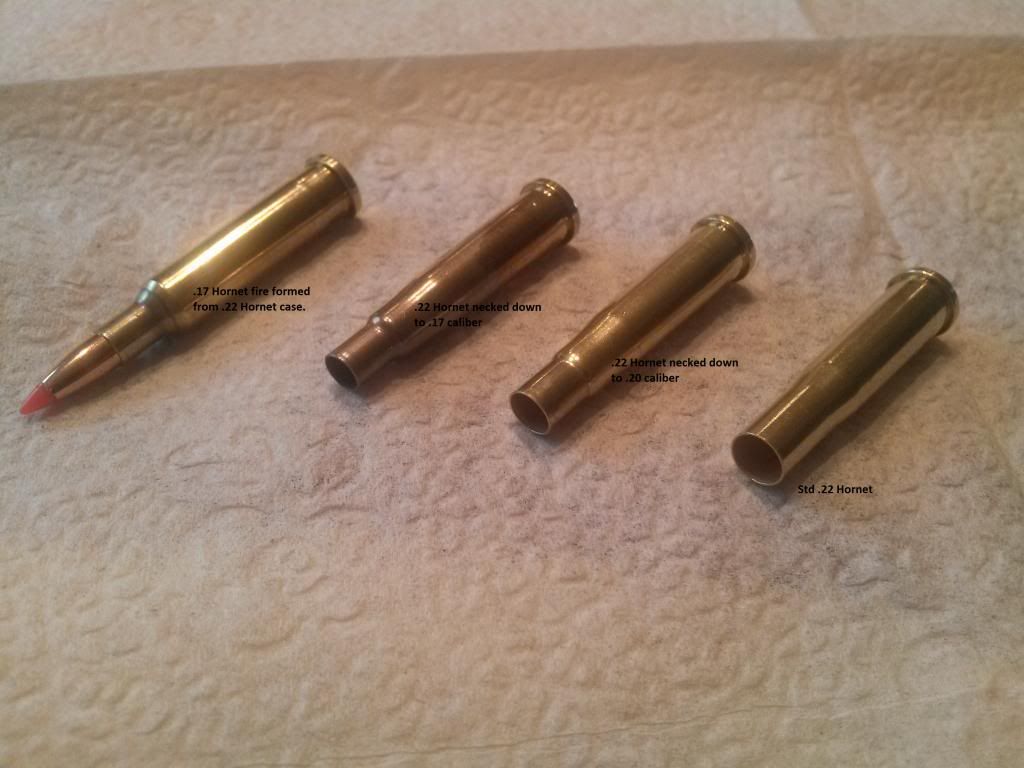
|
|
#2
|
|||
|
|||
|
Those look just like mine. I originally bought some ready to fireform and load, but am now sizing down my own, as you are doing. Work just fine.
 Bill K Bill K
|
|
#3
|
|||
|
|||
|
I have a 17AH set from CH4D that has an intermediate die for knocking the case down from .22 cal to .20 cal.
I then use a full length 17 Hornet die (Hornady) to neck down to .17 cal and push the shoulder back. I trim the cases a bit longer than 1.340 so that on fire forming the neck pulls back to 1.340 (there was some trial and error to get dialed in). Winchester 22 Hornet brass did not need annealing, but PRVI brass needs annealing post forming, prior to fire forming. I fire form with a case full (compressed load) of 4198. Here is a comparison photo of the converted brass and a hand loaded 17 FB 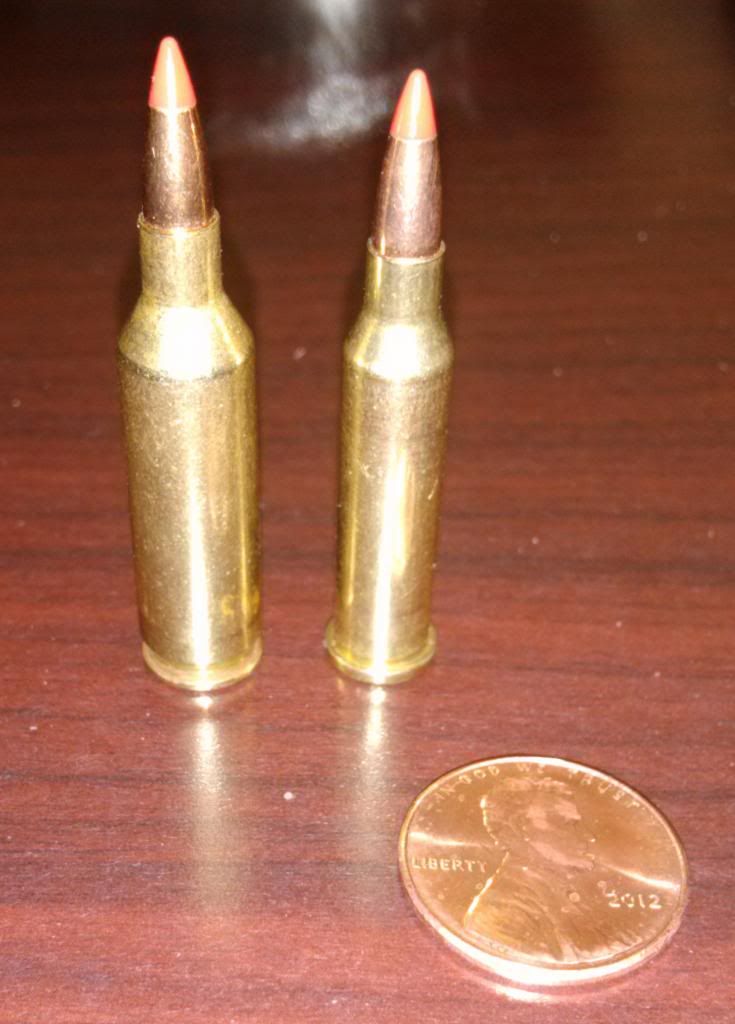
|
|
#4
|
|||
|
|||
|
Quote:
That looks like a 17 hornet along side of a 17 FIREBALL? |
|
#5
|
|||
|
|||
|
Yes, this is the 17 Hornet (Hornady) formed from 22 Hornet brass next to a 17 Remington Fireball for comparison.
|
|
#6
|
|||
|
|||
|
I trim the cases a bit longer than 1.340 so that on fire forming the neck pulls back to 1.340 (there was some trial and error to get dialed in).
Winchester 22 Hornet brass did not need annealing, but PRVI brass needs annealing post forming, prior to fire forming. I fire form with a case full (compressed load) of 4198. Great info thanks... I am keen to start making up some 17 HH cases myself  Just got a Bullberry double ended neck forming die (.20/.17) and ran a couple of annealed cases through, followed by a final FLS using the Hornady die. Came out quite well but wasn't sure how long to trim the cases... could you please advise how much longer than 1.340" they need to be before fire forming? I also measured .22 Hornet cases, 10 each from Highland (Privi), Winchester and Remington. On average the Highland cases were .001" thicker in the neck wall thickness than the thinnest (Remington). I also measured all the rim thicknesses... will post detailed data later today when I get home. Last edited by Tilleyman; 05-23-2013 at 10:15 AM. |
|
#7
|
|||
|
|||
|
OK as promised here's the results of some measurement data I collected on Highland (PRIVI), Winchester and Remington 22 Hornet cases.
Neck wall thickness measured on a Mitutoyo digital ball micrometer, rims on a Mitutoyo digital vernier. It can be seen that Highland has the thickest neck walls on average, followed by Winchester and Remington with the thinnest. Despite having to produce ammunition to CIP instead of SAAMI specifications, Highland brass did not have the thickest rims as I had anticipated. Thickest rim was Winchester, then Remington and Highland with the thinnest by a small margin. Case diameter just in front of the rim was 0.2945" for unfired Hornady factory ammo, 0.2945" for unfired FLS reformed PRIVI brass, 0.2930" for once-fired FLS Remington Hornet brass and smallest diameter was 0.2925" for once-fired FLS Winchester Hornet brass. So it would seem PRIVI brass will not be likely to have that slight 'pot-bellied' look when fired vs the smaller diameter Remington and Winchester brass. Anyway, hope this is of interest to those forming 17 HH brass from 22 Hornet... 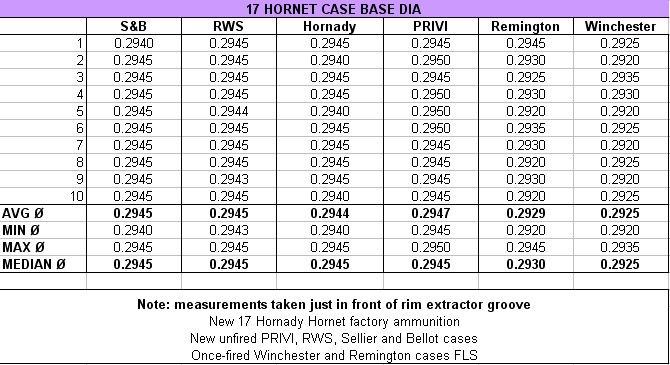 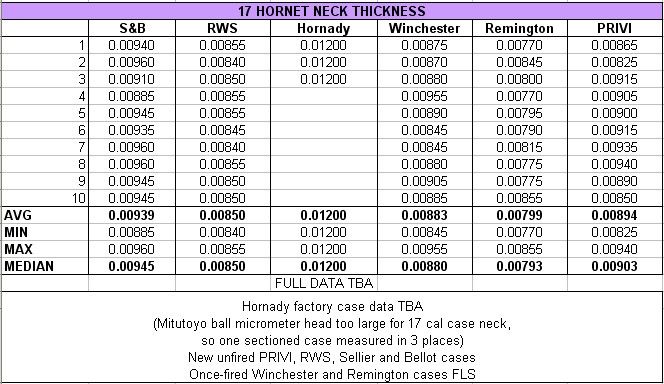 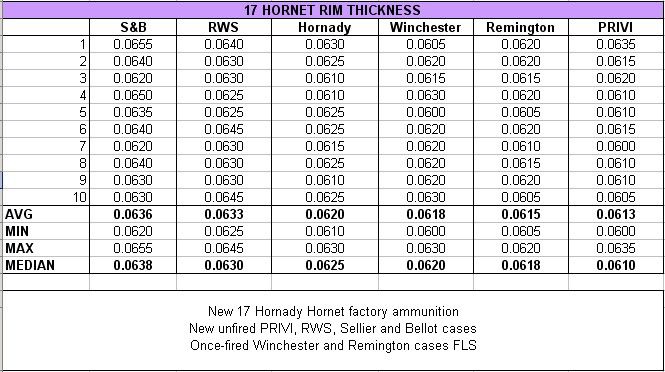 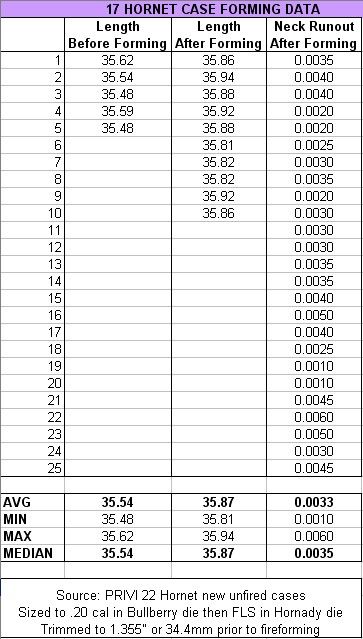
Last edited by Tilleyman; 04-08-2014 at 11:56 AM. Reason: Added S&B data to PRIVI and RWS |
|
#8
|
|||
|
|||
|
The initial trim is 1.355
|
|
#9
|
|||
|
|||
|
Very good info, thanks guys. Will be interested to hear how many loadings you get out of the WW and Privi brass in the 17 HH configuration, compared to factory Hornady brass.
|
|
#10
|
|||
|
|||
|
Yesterday I dispatched a squirrel that had been raiding my wife's bird feeder.
The shot was taken from a bit less than twenty yard with my Model 25 Walking Varminter in 17 Hornet. The load was a compressed charge of 4198, WW WSR primer and a formed PPU 22 Hornet case, with a 20gr Hornady V-Max pill. My wife was sitting on her loveseat reading her Kindle by the window in our bedroom, which overlooks the bird feeder. When I took the shot, the squirrel had jumped off the feeder and was crouched on the ground facing me. All that I saw in my scope's field of view was a burst of fog and the squirrel hurtling backward about a foot an a half. At the moment the shot had gone off, my wife had just glanced up from her reading, toward the feeder when she saw 10 feet of pink mist spraying from the location of the base of the feeder toward the woods behind and a somersaulting blurr of a squirrel hurtling across the ground. All she could say is that it was like watching the Zapruder film when she had glanced up, the moment the squirrel was hit. Upon my inspecting the squirrel, there was nothing but ragged shredded fragments from just below where the squirrel's arms once were. Everything else had been literally vaporized by the 20 grain V-Max. Last edited by vonrang; 06-05-2013 at 11:59 AM. |
 |
| Thread Tools | |
| Display Modes | |
|
|